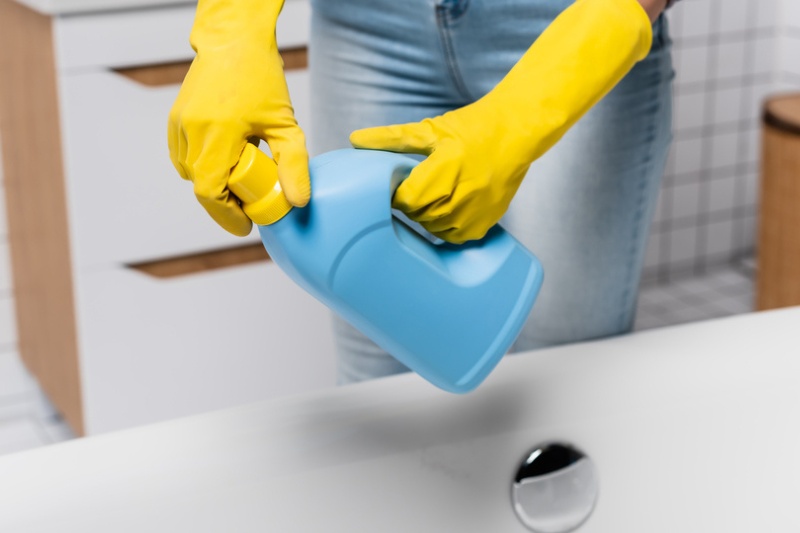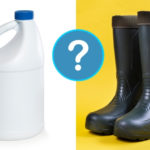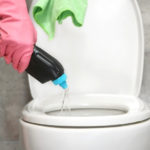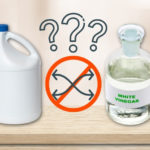Deep cleaning a bathtub doesn’t have to take a lot of effort, but it needs doing regularly to keep it fresh.
Whether you’re just doing regular cleaning or trying to remove some nasty stains, you might be wondering, does bleach damage bathtubs?
Below, we’ll discuss when you can and can’t use bleach, along with the best method for doing so and any alternative cleaning products.
Does Bleach Damage Bathtubs?
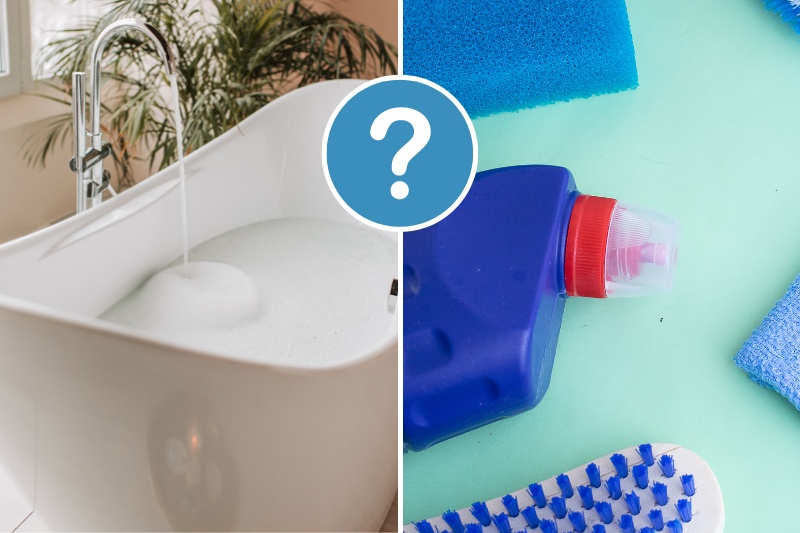
Bleach is safe to use on baths made from coated fibreglass, porcelain, ceramic and certain types of stone.
However, it can damage bathtubs made from acrylic, enamel, cast iron, marble, and copper.
Provided you know what material your bathtub is made from, you should be able to decide whether bleach is safe to use.
However, there are other things to consider before using bleach to clean your bath. For example, bleach is fine to use on white porcelain, but it can damage coloured porcelain by, unsurprisingly, bleaching the colour.
Similarly, these recommendations are dependent on the concentration of bleach you’re using.
It’s often best to avoid using bleach straight from the bottle, as this can be too concentrated for many cleaning jobs. Instead, you’ll want to dilute it (more on this below).
How Does Bleach Work?
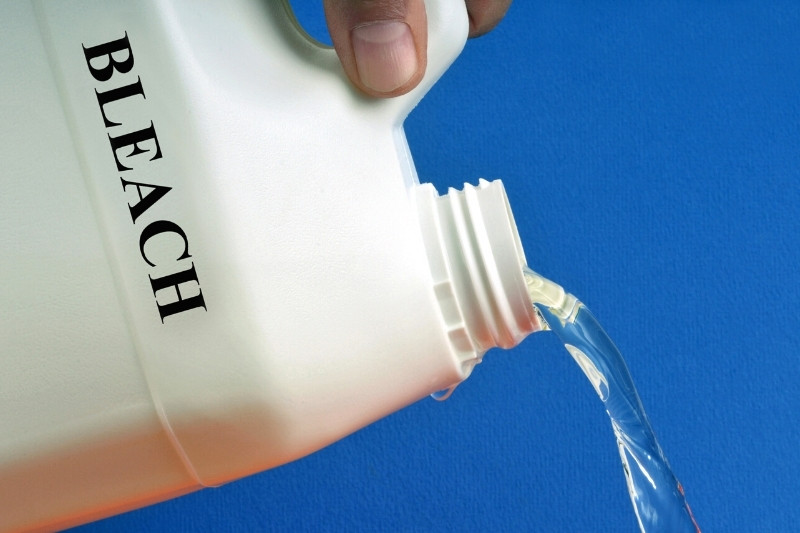
To understand why bleach is safe to use on some surfaces but not others, we should briefly discuss how it works. This relates to chlorine bleach, the standard household cleaning product.
Chlorine bleach is a strong alkaline liquid that’s known as an oxidative agent. The active component (sodium hypochlorite) reacts with organic compounds in different ways to either lighten or kill them.
If you know a thing or two about oxidation, you can probably already guess why we can’t use bleach on metal bathtubs.
Both iron and copper oxidise – this process leads to rust and verdigris, respectively. Pouring bleach on a metal bath, therefore, speeds up a natural process.
Similarly, bleach can break down the coating on acrylic tubs, leading to cracking and further damage. Occasional cleaning with very diluted bleach may be safe, but do this at your own risk.
How to Clean Your Bathtub with Bleach

If you’re happy that your bathtub is safe to be bleached, using it for a deep clean isn’t difficult. The steps are as follows:
- Rinse your bath out. Hose it down with a showerhead or tap water just to remove any loose dirt.
- Mix 50 ml of bleach with 5L of water (a ratio of 1:99). Your bottle of bleach may have different instructions, such as a ratio of 1:49 for disinfecting, so follow these.
- Wipe this solution around the bathtub using a cloth. Make sure you wear rubber gloves and avoid any contact with your skin.
- For basic cleaning, rinse the solution off with hot water. To disinfect the bathtub, ensure the solution stays in contact with the surface for 5-10 minutes. Proceed to rinse it off as normal.
- Wipe the bathtub down with a clean cloth and then rinse again thoroughly.
- Leave the bathtub to air dry before using it.
Make sure you have the windows open when using bleach so your bathroom is properly ventilated. Bleach fumes can make you dizzy if breathed in too much.
What to Use Instead of Bleach
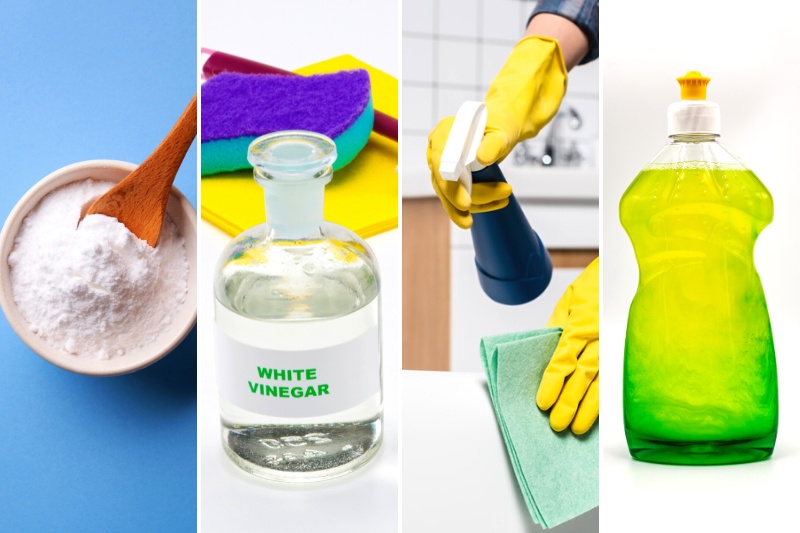
There are various alternatives to bleach depending on what your bathtub is made from. However, some of these still aren’t suitable for certain materials. For example, you’ll want to avoid using anything acidic on metal tubs or anything abrasive on plastic tubs.
Some alternative cleaning products for bathtubs include:
- Bicarbonate of soda for stain removal
- White vinegar for disinfecting
- Antibacterial spray
- Washing-up liquid for general cleaning
For copper or cast iron, you’ll need to use a product specifically designed for these materials. Le Creuset Enamelled Cast Iron Cleaner is a good (if expensive) product. Failing that, washing-up liquid will be fine.
If you’re unsure what your bathtub is made from, avoid using bleach. The safest option is to use washing-up liquid and a non-abrasive sponge. It might take a bit of effort but it’ll guarantee not damaging your bathtub.
Final Thoughts
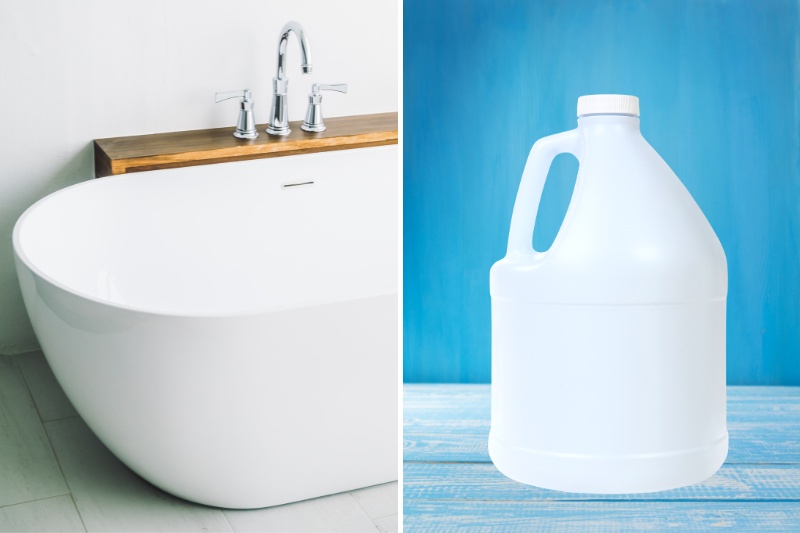
Using bleach on your bathtub might be fine, provided you know what the tub is made from. Occasional use shouldn’t cause serious damage to marble or acrylic, but it’s best to avoid it if possible.
Unless your bathtub is seriously dirty with potentially harmful contaminants, you shouldn’t really need to use bleach on it.
Most materials used for bathtubs are non-porous, meaning they shouldn’t stain easily. As such, pretty much anything can be cleaned off with a bit of washing-up liquid and elbow grease.

Jacob is a writer based in Wales, where he lives with his partner and two dogs. All his work is fuelled by extensive research and buckets of coffee.
